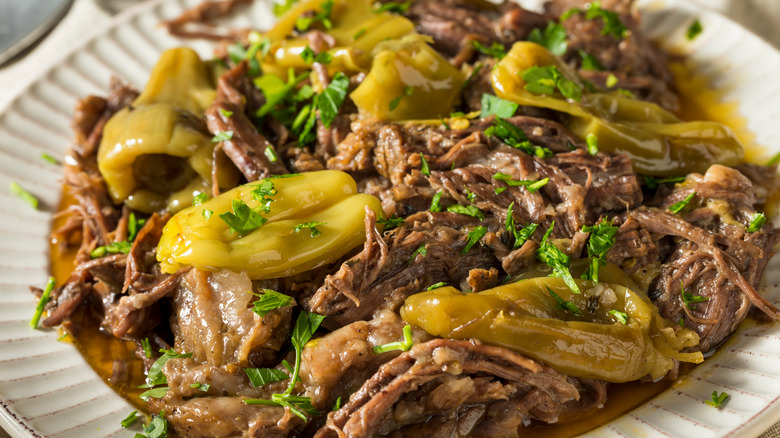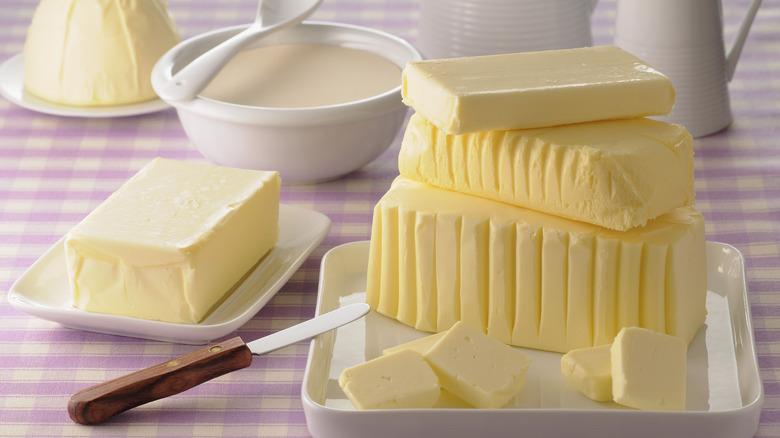The Key To Cooking Perfect Mississippi Roast Is A Stick Of Butter
Sure, you can spend the time — and not an insignificant amount of money — roasting a prime rib in an herb crust until succulently medium rare. You can sear a roast and lovingly nestle it in with chunks of root vegetables and aromatics for a braise to recreate your Nana's soul-rejuvenating pot roast. Or, you can get down with a profoundly simple, tender, juicy Mississippi Roast, a favorite of crockpot fans that is packed with bold flavors and richness from a surprising source: butter.
You may have heard of Mississippi Roast as it has made the proverbial rounds on the internet, and it is understandable why. People love pot roast, but chopping and peeling vegetables, searing the meat, and making the final gravy from the braising liquid can turn some people off. Mississippi Roast throws those steps out the door. Yes, you can sear it for a bit of a deeper flavor, but you certainly don't have to; it tastes just as good with all of the ingredients dumped in a slow cooker set for low and allowed to work its magic for several hours.
Those ingredients are what really set this roast apart. Well-marbled chuck roast is joined by briny, tangy, mildly-spicy pepperoncini and their liquid, powdered ranch dressing mix, powdered brown gravy mix, and often powdered onion soup mix to create a unique bath for the meat. But the thing that really lends this roast heft is a significant slab of butter that is laid over the meat.
Butter makes it better
Our recipe for Mississippi Roast calls for half of a stick of unsalted butter, and it is important to understand why we call for the unsalted variety. This is a dish with many components that are already well-seasoned — the roast is sprinkled with salt and pepper, the various powdered mixes contain salt, as does the pepperoncini — so the butter doesn't need to up the salt.
What the butter does in this recipe is twofold. The more straightforward contribution is the fat it adds and how that helps the jus, gravy, or whatever you want to call it, develop a texture that coats the meat and the tongue, becoming that much more savory and satisfying. Yes, the chuck roast contributes a good deal of fat too, but not all fats are the same, and the addition of butter builds layers in this roast. The butter also contains milk solids that toast during cooking, lending the dish a slightly-creamy nuttiness.
Of course, you'll see a range of different quantities of butter used across different recipes, from our recommendation of half of a stick up to a whole stick. There's no right answer. You should feel free with a forgiving recipe like Mississippi Roast to modify the recipe to suit your liking and how you plan on serving it, whether it will be draped over mashed potatoes or stuffed into hoagie rolls.

